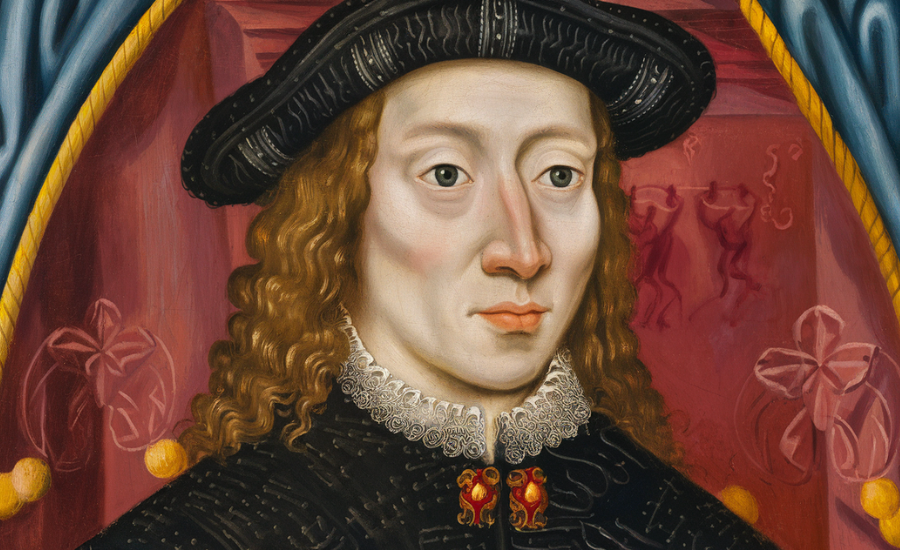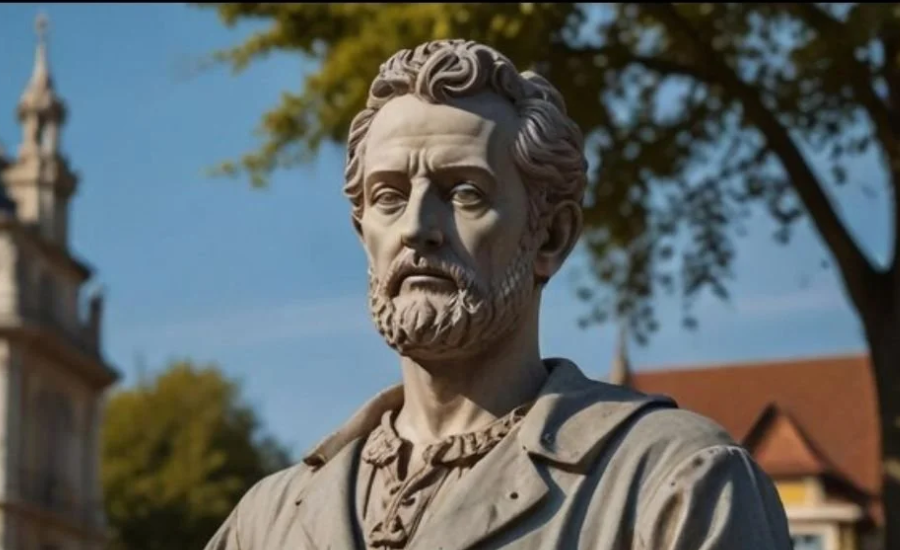The 1555 Portrait Servais Germany: Reflecting Renaissance Ideals and Heinrich Servais’s Enduring Legacy
The 16th century was a transformative period in European history, marked by profound intellectual, cultural, and social changes. Central to this era was the Renaissance, a time when the arts, science, and philosophy flourished. Heinrich Servais emerged as a key figure during this period, his influence extending beyond his scholarly pursuits. One of the most significant artifacts from this time is the 1555 Portrait Servais Germany, which captures the essence of the Renaissance’s cultural and intellectual climate.
Heinrich Servais, a prominent scholar of the 16th century, made notable contributions that reflected the broader intellectual awakening of the Renaissance. His legacy is prominently preserved in the 1555 Portrait Servais Germany, a masterpiece that not only highlights his personal features but also embodies the rich cultural and scholarly environment of the era. This portrait offers a glimpse into the artistic and intellectual ethos that defined the Renaissance.
The 1555 Portrait Servais Germany, stands as a testament to the artistic and intellectual achievements of the Renaissance. It encapsulates the era’s quest for knowledge and self-expression, illustrating the significant role of figures like Servais in shaping the period’s scholarly and cultural landscape. Through this portrait, we gain a deeper appreciation for the Renaissance’s impact and the individuals who contributed to its legacy.
1555 Portrait Servais Germany: Capturing the Impact of a Renaissance Scholar

Heinrich Servais, born in Germany in 1555, was a distinguished Renaissance figure whose influence spanned multiple areas of society. Although specifics about his personal life are limited, his contributions to academia and social affairs reveal a significant impact on his era. Servais was deeply involved in community development and local governance, championing educational reforms that laid the groundwork for contemporary public education systems. His commitment to advancing intellectual pursuits and societal betterment underscores his essential role in shaping the intellectual landscape of Renaissance Germany.
In the context of his era, Heinrich Servais emerged as a key player in promoting educational and social changes. His active role in advocating for educational improvements demonstrates his forward-thinking approach and dedication to fostering knowledge and learning. The 1555 Portrait Servais Germany, serves as a historical artifact that encapsulates his contributions and reflects the broader Renaissance ideals he embodied. This portrait not only commemorates Servais but also provides insight into the cultural and intellectual environment of his time.
The 1555 portrait Servais Germany, stands as a lasting tribute to Heinrich Servais’s impact on Renaissance society. It captures both his personal identity and his significant contributions to intellectual and social reforms. Through this portrait, we gain a valuable perspective on how Servais’s efforts influenced the development of educational practices and community engagement during the Renaissance, highlighting his role in the broader narrative of intellectual and cultural advancement in Germany.
Exploring the Artistic Significance of the 1555 Portrait Servais Germany
The “1555 portrait Servais, Germany” transcends its role as a mere historical representation, emerging as a crucial cultural artifact that provides valuable insights into the artistic and societal values of its time. This portrait is distinguished by its exceptional realism and meticulous attention to detail, setting it apart from typical artworks of the period. The strategic use of deep red and gold tones in the painting not only conveys a sense of wealth and high status but also showcases the intricate craftsmanship and artistic conventions that were highly esteemed during the Renaissance.
The portrayal of Servais is further enhanced by the expert application of chiaroscuro, a technique that employs a dramatic interplay of light and shadow to create a lifelike three-dimensional effect. This masterful use of light accentuates Servais’s thoughtful expression, effectively drawing viewers into a deeper contemplation of his intellectual and personal qualities. The portrait’s ability to capture both the physical likeness and the profound intellectual aura of Servais reflects the Renaissance era’s dedication to exploring and celebrating human complexity.
Overall, the 1555 portrait Servais, Germany, serves as a testament to the rich artistic and cultural context of the Renaissance. It not only immortalizes a significant historical figure but also illustrates the era’s commitment to artistic excellence and intellectual engagement. Through this portrait, we gain a deeper understanding of the values and artistic standards that shaped Renaissance society and its prominent individuals.
Honoring Heinrich Servais: His Contributions to Education and Civic Advancement
Heinrich Servais’s impact went well beyond his notable contributions to philosophy and the arts, reaching into the domains of education and civic advancement. His forward-thinking ideas and dedication to fostering a culture of inquiry and critical thinking played a crucial role in shaping the cultural and intellectual landscape of Germany. Servais’s innovative approach to education and societal reform was instrumental in influencing the development of German identity over generations. Although his achievements may not be as widely documented as those of some of his peers, his influence remains deeply embedded in the academic and cultural institutions established in his name.
The legacy of Heinrich Servais is reflected in the various institutions and scholarships that honor his contributions to education and cultural progress. His pioneering work in promoting educational reforms laid the groundwork for significant advancements in academic practice, highlighting his enduring impact on the intellectual foundations of his society. The 1555 portrait Servais, Germany, further encapsulates his profound influence, serving as a visual testament to his role in shaping the academic and cultural ethos of his time.
Today, the 1555 portrait Servais, Germany, stands not only as a remarkable piece of art but also as a symbol of Servais’s lasting legacy in education and civic progress. This portrait, alongside the ongoing recognition through educational and cultural institutions, underscores the continued relevance of his contributions. Servais’s vision and dedication continue to inspire and resonate within the realms of academic and cultural development, reinforcing the importance of his role in the broader historical context.
The Legacy of Heinrich Servais: How the 1555 Portrait Captures a Turbulent Era

Heinrich Servais’s life and achievements vividly illustrate the multifaceted nature of 16th-century Germany, a period defined by intense religious upheaval, political fragmentation, and profound cultural transformation. As a key figure in this dynamic era, Servais’s contributions are deeply intertwined with the broader historical context of his time. This portrait stands as a testament to the era’s intricate historical tapestry, reflecting the significant changes that shaped European society.
The 16th century was a time of dramatic shifts, prominently marked by the Protestant Reformation, which had a profound impact on both religious and political structures across Europe. Heinrich Servais emerged as a significant figure amidst these transformations, actively engaging with the sweeping changes that characterized the era. His role in navigating and influencing these shifts highlights the interplay between individual contributions and broader historical forces, making his life and work emblematic of the period’s complexities.
The 1555 portrait Servais, Germany, serves as a critical historical artifact, offering insight into the broader narrative of 16th-century Europe. By depicting Servais during a time of profound change, this portrait not only honors his personal legacy but also provides a visual representation of the cultural and political shifts of the era. Through this artwork, we gain a deeper understanding of how figures like Servais were affected by and contributed to the evolving historical landscape of their time.
Art Conservation Today: The Continued Importance of the 1555 Portrait Servais
The conservation of the “1555 portrait Servais, Germany” highlights the significant importance and complexities involved in preserving historical artwork. Maintaining the integrity of this historical piece is vital for allowing future generations to experience and appreciate its artistic and historical value. The meticulous efforts involved in conserving such artwork reflect a broader commitment to preserving cultural heritage, ensuring that significant pieces like the 1555 portrait Servais continue to provide insight into past eras.
The ongoing relevance of Heinrich Servais’s contributions, as evidenced by the preserved 1555 portrait Servais, Germany, highlights the enduring impact of his work on educational and cultural discussions. His innovative ideas and intellectual pursuits remain influential, demonstrating how historical figures can continue to shape contemporary understanding and appreciation. The portrait not only captures Servais’s likeness but also serves as a symbol of his lasting influence on various fields.
By preserving the 1555 portrait Servais, Germany, we honor not just the individual depicted but also the broader cultural and intellectual legacy he represents. This preservation effort ensures that Servais’s achievements and the artistic excellence of the portrait remain accessible to future audiences, reinforcing the timeless nature of his contributions and the universal appeal of his ideas.
The Influence of Heinrich Servais on Art and Science: Insights from the 1555 Portrait

Heinrich Servais played a pivotal role in advancing both the arts and sciences during his time, advocating for innovative thinking and creative exploration. His involvement went beyond mere patronage; he actively engaged in the intersection of artistic and scientific endeavors. Servais recognized the profound connection between artistic creativity and scientific inquiry, promoting a holistic approach that enriched both fields. The 1555 portrait servais germany, stands as a prime example of this synergy, showcasing how the era’s artistic achievements were deeply intertwined with scientific precision.
The 1555 portrait servais germany is more than a simple depiction; it embodies the Renaissance’s dedication to integrating artistic skill with scientific accuracy. This portrait exemplifies how Servais’s influence extended to enhancing the representation of individuality, a central principle of Renaissance humanism. The meticulous attention to detail and the thoughtful interplay of light and shadow in the portrait highlight the sophisticated techniques of the period, reflecting both artistic mastery and scientific insight.
In preserving the legacy of Heinrich Servais through the 1555 portrait servais germany, we gain a deeper appreciation of how his contributions bridged the gap between art and science. The portrait not only celebrates Servais’s personal achievements but also serves as a lasting symbol of the Renaissance’s commitment to blending creativity with intellectual rigor. This enduring artwork continues to reflect the era’s innovative spirit and Servais’s significant role in shaping its cultural and scientific landscape.
How the 1555 Portrait Servais Mirrors Renaissance Society and Intellectual Life
The “1555 portrait Servais, Germany,” carries profound cultural significance that goes well beyond its artistic merits. It serves as a reflection of the societal changes and the dynamic intellectual environment of 16th-century Germany. This portrait not only captures the personal identity of Heinrich Servais but also encapsulates the broader Renaissance transformations that marked the era. The artwork is a vivid representation of the period’s cultural evolution, highlighting the growing emphasis on individualism that defined the Renaissance.
In the context of its time, the 1555 portrait Servais is a notable example of how art was used to convey more than just physical likeness. The portrait’s focus on Servais’s personal characteristics and his inner life reflects the Renaissance’s broader cultural shifts towards valuing individual identity and personal expression. The attention to detail and the portrayal of Servais’s unique attributes exemplify the era’s preoccupation with exploring and representing individuality.
The enduring relevance of the 1555 portrait Servais lies in its ability to illustrate the intellectual and cultural currents of its time. By focusing on the personal aspects of Servais’s character, the portrait offers valuable insights into the Renaissance’s impact on art and society. This artwork not only commemorates Servais himself but also serves as a historical document of the significant changes occurring in 16th-century Germany, reflecting the era’s evolving attitudes towards individuality and personal identity.
Fostering Future Talent: The Impact of Heinrich Servais’s Mentorship
A key element of Heinrich Servais’s enduring legacy lies in his role as a mentor to emerging scholars and artists. By actively supporting and guiding the next generation, Servais created a fertile environment for the growth of intellectual and artistic talent. His dedication to nurturing young minds ensured that his own innovative ideas and artistic principles would be transmitted beyond his own lifetime. This commitment underscores his belief in the importance of mentoring as a means to perpetuate and expand his intellectual and artistic vision.
The 1555 portrait Servais, Germany, serves as a powerful representation of the principles Servais upheld and the impact he had during his time. It reflects not only his personal achievements but also his broader impact on the intellectual community. Through his mentorship, Servais helped shape the future of art and scholarship, ensuring that his ideals and approaches would be carried forward and continue to inspire new generations.
Servais’s efforts in fostering a supportive environment for young talent highlight his broader vision of intellectual and artistic development. By investing in the growth of future leaders in his fields, he solidified his legacy as a key figure in shaping the cultural and scholarly landscape of his time. The preservation of his contributions, illustrated by the 1555 portrait Servais, Germany, continues to honor his commitment to advancing both art and science through education and mentorship.
The Impact of the 1555 Portrait Servais on Modern Appreciation of Historical Context
The lasting allure of the “1555 portrait Servais, Germany,” is deeply rooted in its capacity to convey historical and cultural narratives to today’s audiences. This artwork functions as an essential educational resource, bridging the gap between contemporary viewers and the intricate world of the Renaissance. By examining this portrait, modern audiences gain insight into the period’s multifaceted art, philosophy, and social transformations, which were pivotal in shaping the era’s intellectual and cultural landscape.
The portrait of Servais serves more than just a historical record; it acts as a window into the Renaissance’s rich cultural milieu. Through its detailed portrayal, viewers can explore the complexities of the time, including the evolving philosophical and artistic trends that defined the period. This connection helps to deepen our understanding of Heinrich Servais and his contributions, providing a broader context for his role within the historical framework.
In addition to enriching our knowledge of Servais as an individual, the 1555 portrait Servais enhances our appreciation for the broader Renaissance period. The artwork not only highlights the personal attributes of Servais but also offers a glimpse into the transformative changes of the 16th century. By reflecting on the portrait, we can better appreciate how the cultural and intellectual currents of the time influenced both individual lives and the wider societal developments.
FAQs
Q1. What is the 1555 Portrait Servais?
A. The 1555 Portrait Servais is a significant artwork capturing Heinrich Servais, a key Renaissance figure, reflecting the era’s cultural and intellectual climate.
Q2. Who was Heinrich Servais?
A. Heinrich Servais was a prominent 16th-century scholar and reformer known for his contributions to education, social advancement, and intellectual thought.
Q3. Why is the 1555 Portrait Servais important?
A. The portrait is crucial for understanding the Renaissance period, showcasing Servais’s personal and professional impact and illustrating the era’s focus on individualism and intellectual exploration.
Q4. How does the portrait reflect Renaissance ideals?
A. It embodies Renaissance ideals through its detailed realism, emphasis on individual character, and the blending of artistic and scientific techniques.
Q5. What was Heinrich Servais’s impact on education?
A. Servais played a significant role in advocating for educational reforms and community development, influencing the foundation of modern public education systems.
Related: Lifegames-Written-By-Saul-Z-Barr-Pdf
Conclusion
The 1555 Portrait Servais is a vital artifact from the Renaissance, encapsulating both the personal and cultural significance of Heinrich Servais. As a prominent scholar and reformer, Servais’s impact on education and intellectual life is vividly captured in this artwork. The portrait emphasizes not only his personal achievements but also mirrors the wider cultural and intellectual transformations of the 16th century. Its preservation continues to offer valuable insights into the Renaissance, bridging historical and modern perspectives and underscoring the enduring legacy of this transformative era.
Stay connected for the latest news and exciting stories on Thrill Rise!






